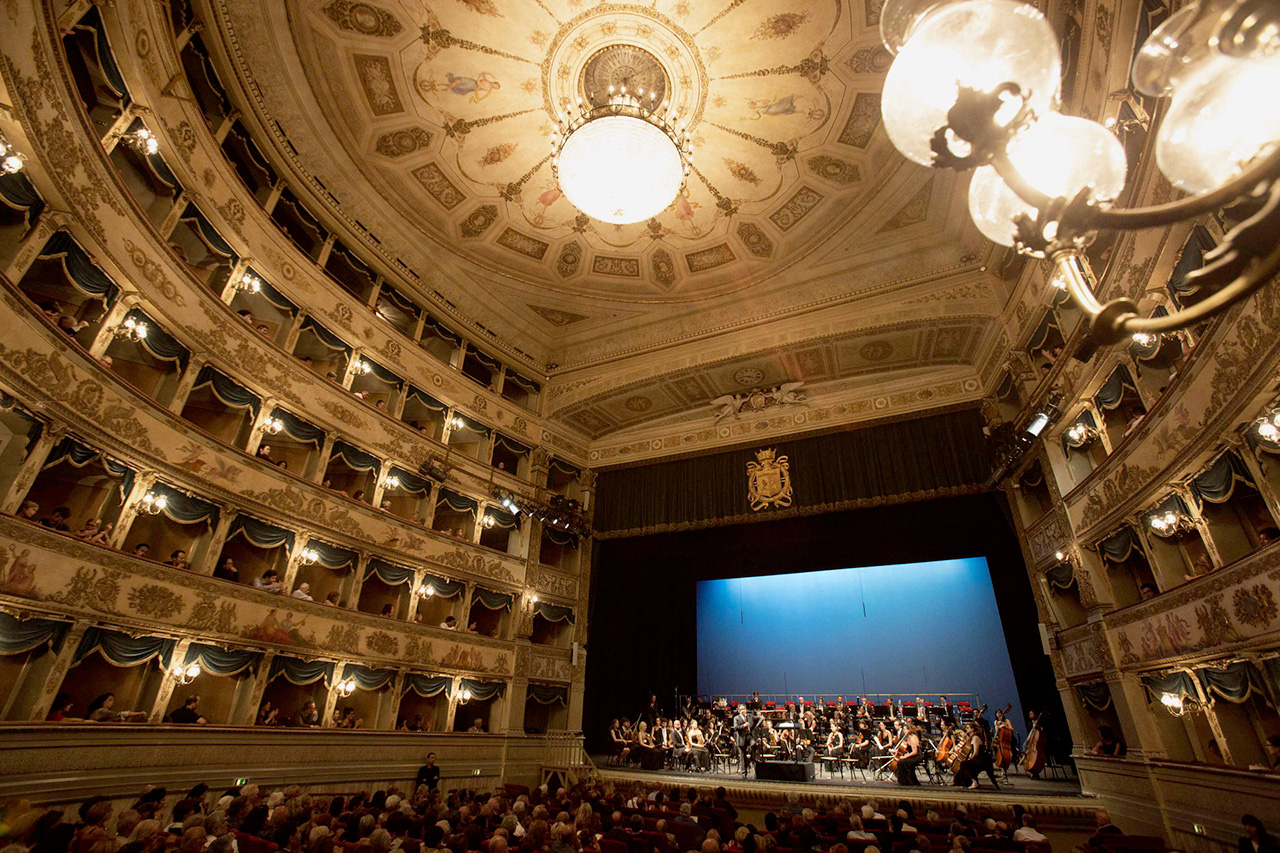Autumn Trilogy: a Trilogy According to Riccardo Muti
Nabucco
music Giuseppe Verdi
opera in four parts libretto by Temistocle Solera
based on the play Nabuchodonosor by Auguste Anicet-Bourgeois and Francis Cornu
and the ballet Nabuccodonosor by Antonio Cortesi
(Prima rappresentazione Milano, Teatro alla Scala, 9 marzo 1842)
Universal Music Publishing Ricordi srl, Milano
revisione critica a cura di Roger Parker
semi-staged
Nabucco Serban Vasile
Ismaele Riccardo Rados
Zaccaria Evgeny Stavinsky
Abigaille Lidia Fridman
Fenena Francesca Di Sauro
Il Gran Sacerdote di Belo Adriano Gramigni
Abdallo Giacomo Leone
Anna Vittoria Magnarello
conductor Riccardo Muti
visual artist Svccy
visual programmer Davide Broccoli
light designer Eva Bruno
Orchestra Giovanile Luigi Cherubini
Coro del Teatro Municipale di Piacenza
choirmaster Corrado Casati
répétiteur Davide Cavalli
Change, renewal and experimentation: all in the pursuit of artistic quality and a direct approach to the widest possible audience. This has always been the hallmark of the Ravenna Festival’s autumn season: from productions conceived as stage boxes to be transformed into something different every night, to a mix of the most diverse genres and periods, from dance to poetry, from theatre to music, from virtual technology to dreamlike settings. And now for something new: the stage will be stripped bare to make way for music and song—naked performances barely clothed in the chromatic and evocative brushstrokes of a young visual artist.
It is an exploration of new staging solutions capable of restoring the opera to its original “purity”, in full compliance with the compositional dictates that Riccardo Muti, once again at the head of his young orchestra, will investigate through the innermost subtleties of the score, seeking at the same time to enhance its atmospheres and moods. It is a journey towards a different kind of staging, far removed from the conventional stage action, but also from the aseptic dimension of the concert, free from didactic intentions and yet imbued with the dramaturgical essence of the musical texture. The inexhaustible texture of Italian opera, be it the tragic, lunar lyricism of Bellini’s masterpiece Norma; the heroic longing for freedom that animates Nabucco, or the emotional fervour that pervades every page of Verdi’s operas.



